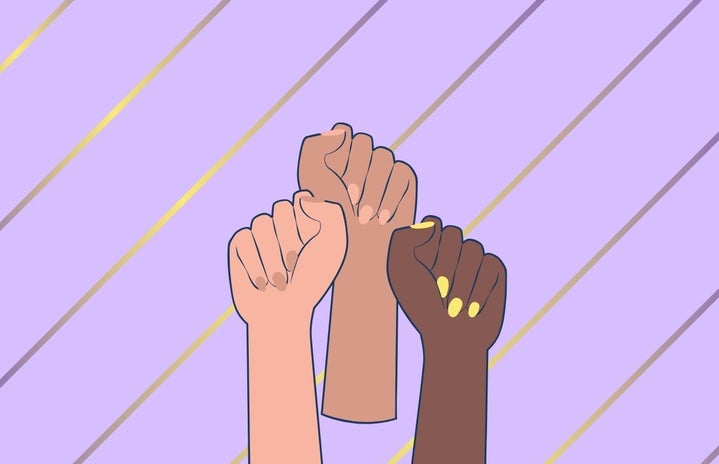In today’s day and age, social media has become fully integrated in much of our daily life. In the past few years alone, it has become the primary source of entertainment, marketing and news for the majority of the population. Naturally, with many of us living part of our lives on social media, the way we present ourselves on our profiles has become dangerously important. While social media is an amazing tool to spread awareness and resources and for promotion, it also acts as a medium that breeds performative activism.
Performative activism refers to activism done to increase one’s social capital, rather than a result of one’s devotion to a cause or organization. On social media, it is the “performance” of activism to gain validation, recognition, or support from one’s own followers, to which the “performance” served little to no intent in actually supporting the specific cause or organization.
So what is an aesthetic infographic? These infographics are often found as Instagram slide posts that consist of appealing opening slides of the topic, followed by multiple slides describing the histories of the issue, and how one can help with a list of resources. These infographics are certainly a step up from big social media influencers posing in the middle of protests and can truly be very informative for people who are willing to learn about and support the cause. Their aesthetic look is a perfect way to stand out from other posts social media users are exposed to, attracting them to check out the post and (hopefully) have them repost it themselves.
However, the Instagram infographic has also become a “checkbox” of activism, in other words, an act that is considered “enough” to support a cause. It seems as though the sheer amount of reposts is largely contributed to peer pressure for many social media users to prove that they are in support of a certain cause. If not reposted, it is potentially assumed that the individual is against the cause. Essentially, an infographic repost represents the fact that the social media user is a good and sensible person, placing the user’s character in the center of attention, rather than the actual information of the post itself. Because social media has become an even bigger insight into ourselves and what we represent during this pandemic, the post now acts to represent the individual’s “activism.”
While it is understandable that the aesthetic factor of these infographics acts to stand out from different posts, it also begs the question of whether it is appropriate to make activism aesthetically pleasing. In such a way that social media serves as a “filter” of one’s highlight reel in life, aesthetic infographics act as rose-tinted glasses for viewing difficult topics. Would these infographics be getting the attention they are receiving if they were not made to be aesthetically pleasing? What does this say about the way we view issues of the world, on and off of social media?
The presence of the aesthetic factor also serves to downplay the information of the post. For instance, it is possible that the infographic was reposted because the social media user thought the infographic looked nice, thus sharing it to their account on the basis of its visual appeal as opposed to its material. As such, the importance of an infographic’s attractiveness becomes just as important as the information it conveys. It has become commodified, marketed to people to share to enhance their profile. Regardless of its useful information, if an infographic is not aesthetic enough, it may never gain as many reposts as others that are deemed eye-catching.
On an even grander level, many large corporations also began reposting the infographics or creating aesthetic posts in support, not to pay their respect to the causes, but to gain recognition from their consumers. Many companies and institutions incorporated the causes into their brand, almost as if the causes acted as advertisements to reel people into purchasing their product.
It is important to note that I am not trying to dictate what people post and don’t post on their social media, nor am I trying to instill “rules” of what one is allowed to post and not post. I’m also not discrediting the good intentions of every single person who has ever reposted an infographic. I am simply asking people to be more conscious of their intentions behind the post.
Before you repost an infographic, be sensible of whether you are mindlessly pasting it on your page to prove to your followers you are in support of a cause, or whether you are simply posting it for its sheer aesthetic factor and peer approval. Simply put, large issues, such as systemic racism, cannot be undone through the simple repost of an infographic. What truly matters, regardless of whether you post these infographics or not, is whether you are truly learning from the information in these posts and trying to make a change behind the scenes of social media. Activism sparks from the “action” of individuals, and such actions do not always need to be “performed” in front of audiences of social media.


